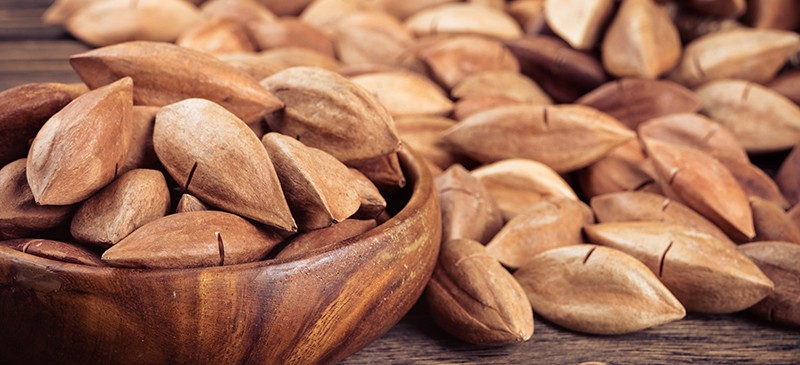This Dr. Axe content is medically reviewed or fact checked to ensure factually accurate information.
With strict editorial sourcing guidelines, we only link to academic research institutions, reputable media sites and, when research is available, medically peer-reviewed studies. Note that the numbers in parentheses (1, 2, etc.) are clickable links to these studies.
The information in our articles is NOT intended to replace a one-on-one relationship with a qualified health care professional and is not intended as medical advice.
This article is based on scientific evidence, written by experts and fact checked by our trained editorial staff. Note that the numbers in parentheses (1, 2, etc.) are clickable links to medically peer-reviewed studies.
Our team includes licensed nutritionists and dietitians, certified health education specialists, as well as certified strength and conditioning specialists, personal trainers and corrective exercise specialists. Our team aims to be not only thorough with its research, but also objective and unbiased.
The information in our articles is NOT intended to replace a one-on-one relationship with a qualified health care professional and is not intended as medical advice.
Pili Nuts: The Keto-Friendly Nuts that Support the Heart & Bones
March 7, 2020

Fans of “Shark Tank” may be familiar with pili nuts, a type of high-fat, low-carb nut associated with a wealth of powerful health benefits. Although Pili Hunters founder Jason Thomas was unable to secure an investment from the sharks with his appearance on the show, he did succeed at piquing the public’s interest in the pili nut and bringing this nutritious ingredient into the limelight.
Despite their recent surge in popularity, pili nuts have been enjoyed for their rich, buttery taste and versatility for hundreds of years. In fact, these delicious keto nuts can be spotted in many Asian desserts and dishes, ranging from cakes to candies and beyond.
In this article, we’ll take a closer look at the pili nuts benefits and side effects, along with some easy ways to enjoy this interesting ingredient and its place among the healthiest nuts to eat.
What Are Pili Nuts?
Pili nuts are edible tree nuts that come from Canarium ovatum, a type of tropical tree that belongs to the torchwood family. A typical pili tree can grow to be around 60–70 feet tall and produces dark purple fruit with smooth, shiny skin.
Pili nuts are commonly cultivated in the Philippines and a staple in many Asian cuisines. With their unique, nutty flavor, they make an awesome addition to desserts, such as chocolate, candy and ice cream.
Pili nuts are also used to make mooncakes, a traditional dessert served during the harvest festival each year.
Other parts of the pili tree can also be consumed. The shoots, for example, are sometimes added to salads while the pulp of the fruit can be boiled and seasoned for a simple side dish.
Nutrition Facts
The pili nuts nutrition profile boasts a good amount of fat and calories in each serving, along with micronutrients like manganese, magnesium and thiamine.
A one-ounce serving of pili nuts contains the following nutrients:
- 203 calories
- 1 gram carbohydrates
- 3 grams protein
- 22.5 grams fat
- 0.7 milligrams manganese (33 percent DV)
- 85.3 milligrams magnesium (21 percent DV)
- 0.3 milligrams thiamine (17 percent DV)
- 162 milligrams phosphorus (16 percent DV)
- 0.3 milligrams copper (14 percent DV)
- 0.8 milligrams zinc (6 percent DV)
- 1 milligram iron (6 percent DV)
In addition to the nutrients listed above, pili nuts also contain a small amount of potassium, calcium and folate.
Benefits
There are plenty of reasons you may want to consider adding pili nuts to your diet. Here are a few of the top health benefits of these nutritious nuts.
1. Good Source of Healthy Fats
Pili nuts are loaded with heart-healthy fats, packing nearly 23 grams into a single one-ounce serving. They are composed mostly of monounsaturated fats, a type of fat that has been shown to lower levels of inflammation to help protect against chronic disease.
Swapping monounsaturated fats in for other fats in your diet has also been shown to increase bone density, enhance mood and prevent weight gain in both human and animal studies.
Because each serving is also very low in carbohydrates, many people use pili nuts on keto to give their fat intake a quick boost. In addition to making a delicious snack as is, pili nuts can also be used to make keto fat bombs, energy bites and keto-friendly desserts.
2. Rich in Antioxidants
The pili nut is truly a powerhouse of nutrition. In addition to providing a wealth of micronutrients in every ounce, these healthy nuts are also brimming with a range of antioxidants.
Antioxidants are compounds that can fight harmful, disease-causing free radicals to prevent cell damage and alleviate inflammation. Interestingly enough, some research even suggests that antioxidants could play a key role in disease prevention and may help protect against conditions like heart disease and cancer.
Pili nuts are especially rich in manganese, an important mineral that possesses powerful antioxidant properties. According to one study conducted in the Philippines, drinking a pili pomace drink significantly increased antioxidant and polyphenol levels in the blood within just 30 minutes.
3. May Promote Heart Health
Pili nuts are loaded with monounsaturated fats, a beneficial form of fat found in sources like avocados, nuts and vegetable oil. Studies show that trading other types of fat in your diet for monounsaturated fat could help reduce levels of bad LDL cholesterol to block the buildup of plaque in the arteries.
Not only that, but protection against heart disease is also considered one of the top health benefits of nuts. In fact, according to a 2018 study with over 210,000 participants, eating a higher amount of nuts was tied to a lower risk of developing coronary heart disease in the long run.
4. Boosts Weight Loss
Although pili nuts are relatively high in calories, they can definitely be enjoyed in moderation as part of a healthy weight loss diet. And because they contain a good amount of healthy fats and fiber in each serving, they can help keep you feeling full between meals to curb cravings and appetite.
What’s more, some studies have found that nuts could be especially beneficial when it comes to weight loss. A review in American Journal of Clinical Nutrition even reported that regular consumption of nuts could be linked to a lower body weight and a reduced risk of weight gain over time.
5. Strengthens Bones
Packing one-third of the daily requirement for manganese into a single serving, pili nuts can be great for building bone strength. Although manganese is involved in several aspects of health, some research shows that it may be particularly important for bone health.
According to one animal model out of South Korea, administering manganese to rats improved bone density of the spine and femur and increased levels of osteocalcin, a type of protein used to measure bone formation.
Pili nuts are high in several other micronutrients necessary for bone health as well. Magnesium, for example, can help regulate bone integrity while phosphorus and copper are both necessary for maintaining skeletal structure and maximizing bone density.
How to Use
Wondering where to buy pili nuts and how you can add them to your diet? Although they’re not quite as common as other nut varieties like almonds and walnuts, you may be able to find pili nuts at Whole Foods or other health stores and specialty shops.
If you’re having difficulty finding them at a store near you, you can also purchase them through many online retailers.
Pili nuts work well sprinkled over yogurt, oatmeal, salads and smoothie bowls. They also make an excellent addition to high-fat snacks like fat bombs, homemade trail mix or energy bites.
You can try whipping up some pili nut butter as well, which you can swap in for peanut or almond butter in your favorite recipes and desserts.
Need some more inspiration? Here are a few other interesting ways to include this nutritious nut in your diet:
Risks and Side Effects
Although these healthy nuts can be safely enjoyed by most, there are some who may need to moderate or limit their intake.
Like other types of nuts, such as cashews, walnuts and almonds, pili nuts are considered a type of tree nut. This means that those with a tree nut allergy should steer clear of pili nuts, as they may cause serious side effects such as nausea, diarrhea, stomach pain and swelling.
In severe cases, tree nuts can even trigger anaphylaxis, which can be dangerous and potentially life-threatening if left untreated.
Keep in mind that pili nuts are also very high in calories, with over 200 calories packed into each ounce. While they can definitely be incorporated into a healthy weight loss diet, it’s important to moderate your intake and keep portion sizes under control.
Consuming high amounts without making other adjustments to your diet could potentially lead to excess calorie intake and weight gain.
Additionally, remember that not all products on the market are created equal. Be sure to check the ingredients label carefully and steer clear of products pumped full of sugar, additives and preservatives to maximize the potential health benefits.
Final Thoughts
- Pili nuts are a type of edible tree nut commonly cultivated in the Philippines and used in many Asian cuisines.
- In addition to being low in carbs and high in heart-healthy fats, pili nuts are also a good source of antioxidants and micronutrients like manganese, magnesium, thiamine and phosphorus.
- Adding this nutritious nut to your diet could also improve heart health, strengthen the bones and promote weight loss when enjoyed in moderation.
- From fat bombs to smoothie bowls to energy bites and beyond, there are tons of ways that you can include this healthy ingredient in your diet.














